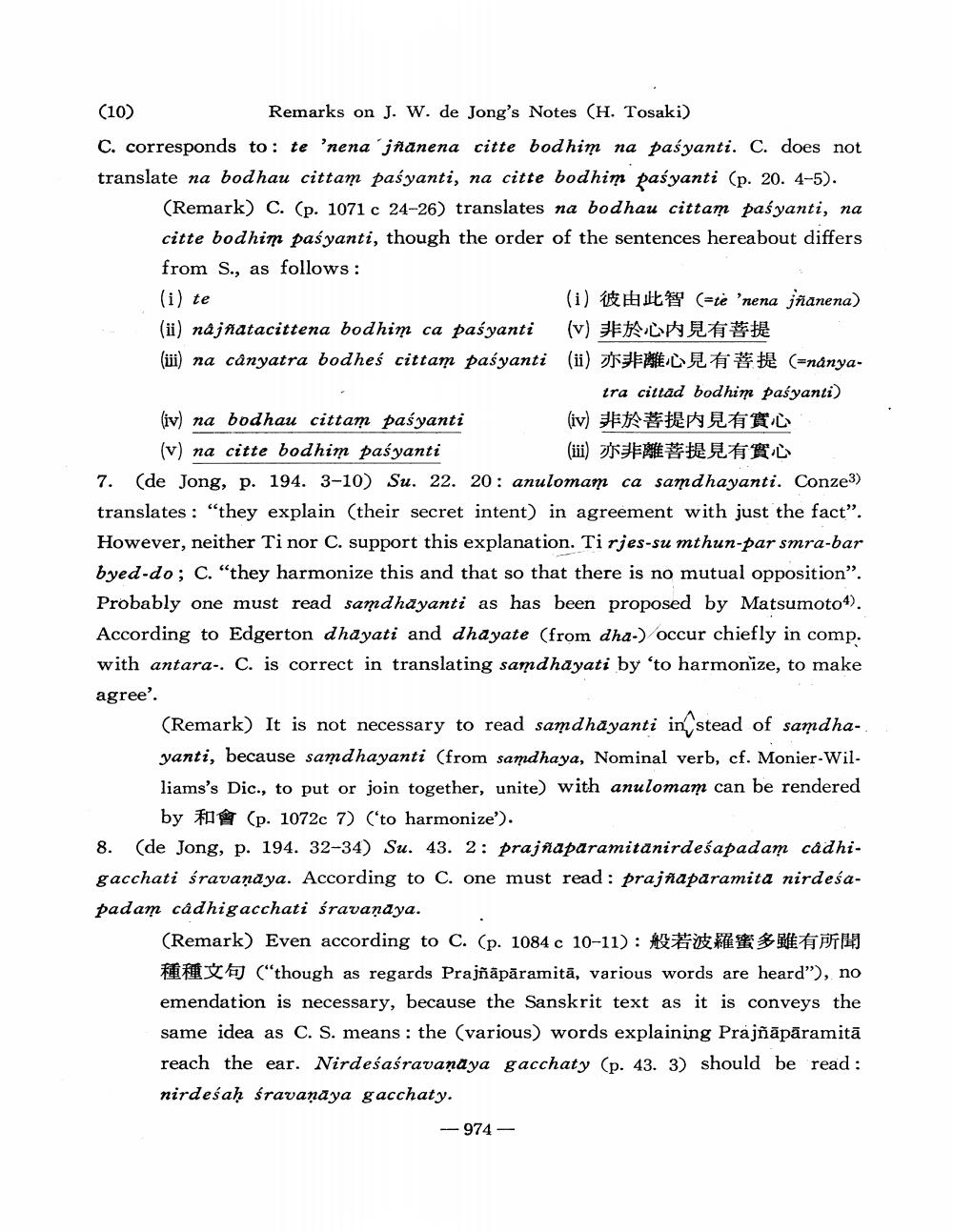Book Title: remarks on j w de jongs notes on Suvikrantavikramiparipraccha Prajnaparamita Text Author(s): Hiromasa Tosaki Publisher: Hiromasa Tosaki View full book textPage 3
________________ (10) Remarks on J. W. de Jong's Notes (H. Tosaki) C. corresponds to: te 'nena jñanena citte bod him na paśyanti. C. does not translate na bodhau cittam paśyanti, na citte bodhim paśyanti (p. 20. 4-5). (Remark) C. (p. 1071 c 24-26) translates na bodhau cittam paśyanti, na citte bodhim paśyanti, though the order of the sentences hereabout differs from S., as follows: (i) te (i) t (=te 'nena jñanena) (ii) najñatacittena bodhim ca paśyanti (v) # CP T he (ii) na cânyatra bodheś cittam paśyanti (ii) K# OL (=nânya ira cittad bodhim paśyanti) (iv) na bodhau cittam paśyanti (iv) ## O (v) na citte bodhim paśyanti (i) ORL 7. (de Jong, p. 194. 3-10) Su. 22. 20: anulomam ca samdhayanti. Conze3) translates : "they explain their secret intent) in agreement with just the fact”. However, neither Ti nor C. support this explanation. Ti rjes-su mthun-par smra-bar byed-do; C. "they harmonize this and that so that there is no mutual opposition". Probably one must read samdhayanti as has been proposed by Matsumoto4). According to Edgerton dhayati and dhayate (from dha-) occur chiefly in comp. with antara-. C. is correct in translating samdhayati by 'to harmonize, to make agree'. (Remark) It is not necessary to read samdhayanti in stead of samdhayanti, because samdhayanti (from samdhaya, Nominal verb, cf. Monier-Williams's Dic., to put or join together, unite) with anulomam can be rendered by FA (p. 1072c 7) (to harmonize'). 8. (de Jong, p. 194. 32-34) Su. 43. 2: prajñaparamitanirdeśapadam câdhigacchati śravanaya. According to C. one must read: prajñaparamita nirdeśapadam câdhigacchati śravaņaya. (Remark) Even according to C. (p. 1084 c 10-11): * * MET FW ("though as regards Prajñāpāramitā, various words are heard”), no emendation is necessary, because the Sanskrit text as it is conveys the same idea as C. S. means: the (various) words explaining Prajñāpāramitā reach the ear. Nirdeśaśravanaya gacchaty (p. 43. 3) should be read: nirdeśaḥ śravanaya gacchaty. - 974 —Page Navigation
1 2 3 4 5
